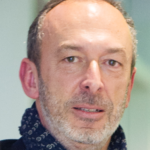Proc. SPIE 7446, Wavelets XIII, 744605 (September 04, 2009); doi:10.1117/12.826275
Noise level and photobleaching are cross-dependent problems in biological fluorescence microscopy. Indeed, observation of fluorescent molecules is challenged by photobleaching, a phenomenon whereby the fluorophores are degraded by the excitation light. One way to control this process is by reducing the intensity of the light or the time exposure, but it comes at the price of decreasing the signal-to-noise ratio (SNR). Although a host of denoising methods have been developed to increase the SNR, most are post-processing techniques and require full data acquisition. In this paper we propose a novel technique, based on Compressed Sensing (CS) that simultaneously enables reduction of exposure time or excitation light level and improvement of image SNR. Our CS-based method can simultaneously acquire and denoise data, based on statistical properties of the CS optimality, noise reconstruction characteristics and signal modeling applied to microscopy images with low SNR. The proposed approach is an experimental optimization combining sequential CS reconstructions in a multiscale framework to perform image denoising. Simulated and practical experiments on fluorescence image data demonstrate that thanks to CS denoising we obtain images with similar or increased SNR while still being able to reduce exposure times. Such results open the gate to new mathematical imaging protocols, offering the opportunity to reduce photobleaching and help biological applications based on fluorescence microscopy.


